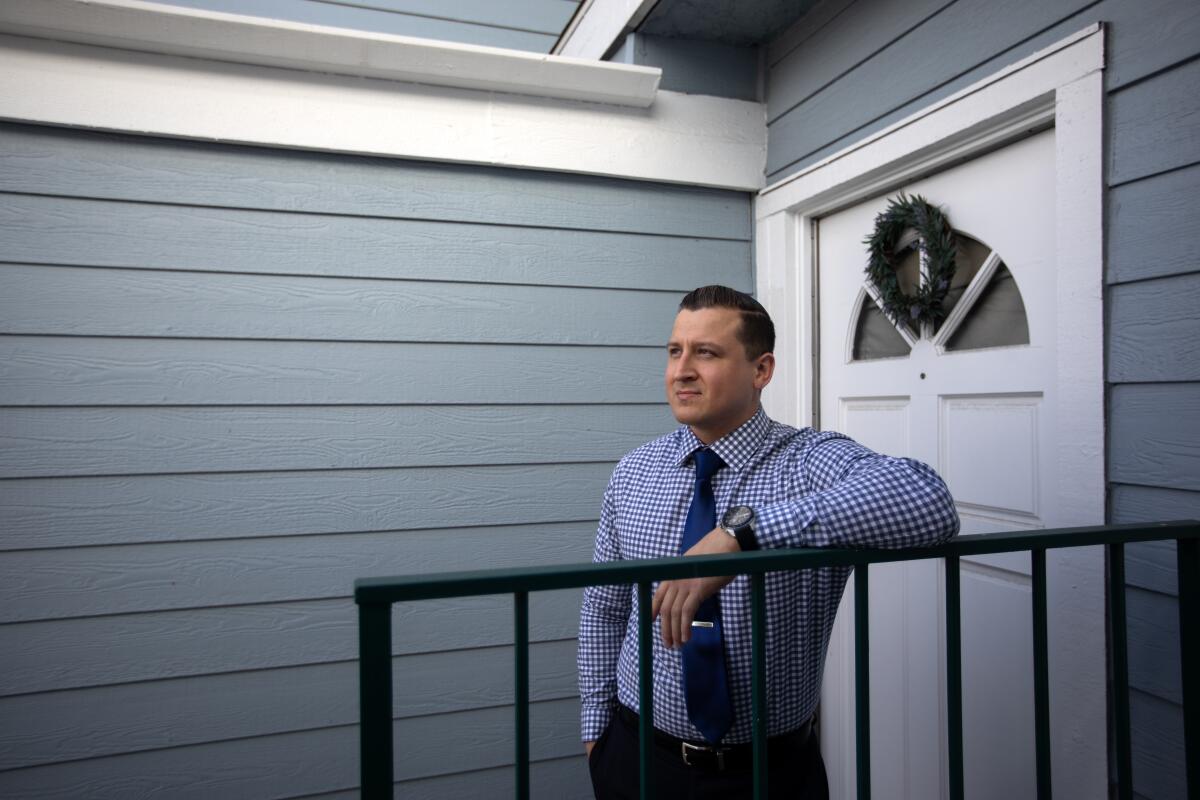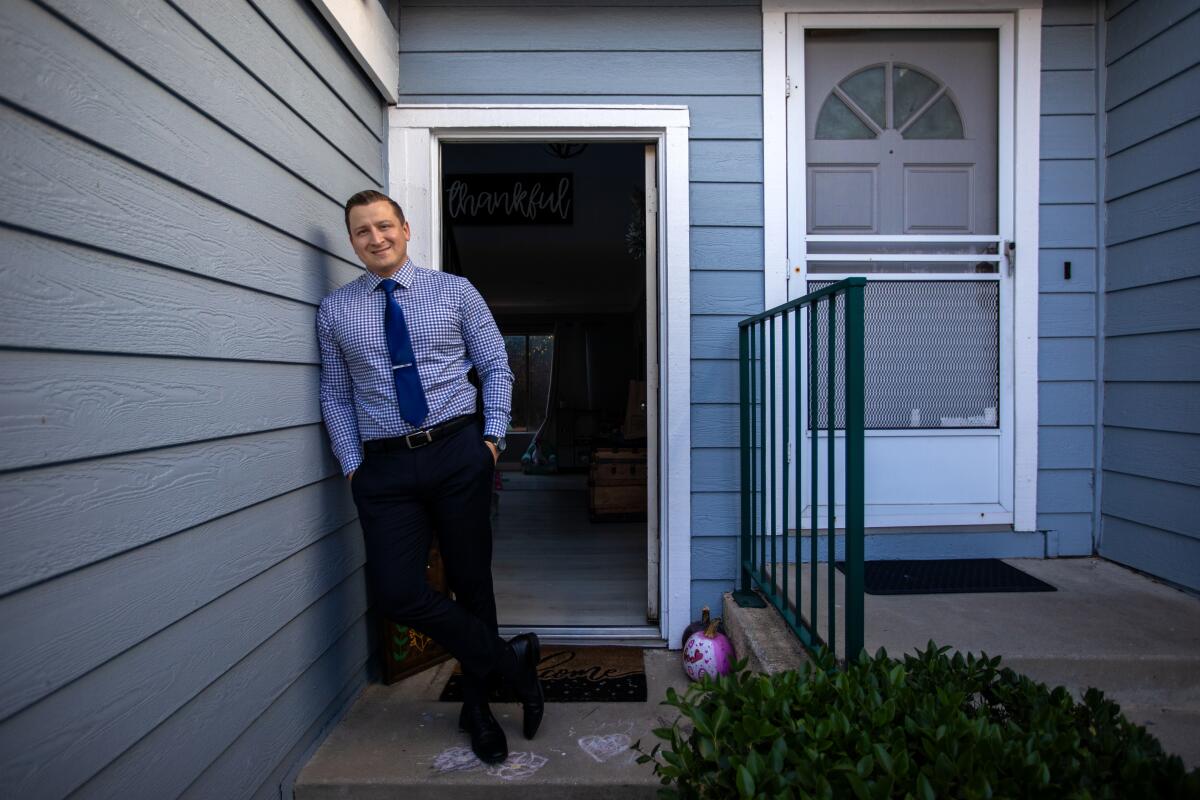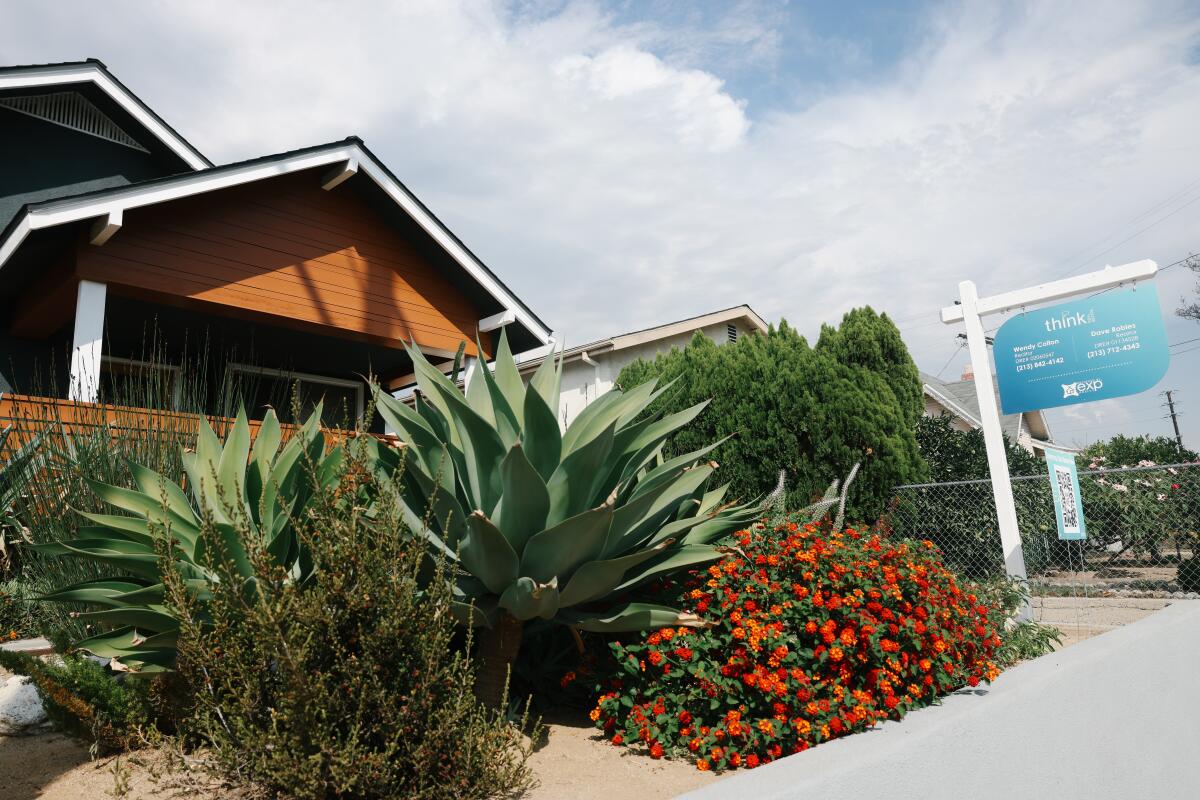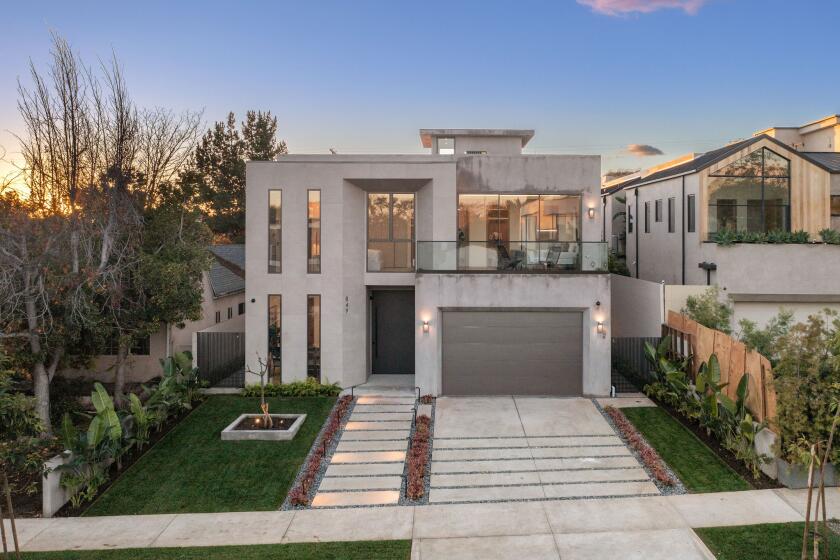Southern California home values near record despite the high cost of borrowing

Southern California home prices are nearing a record high at a time of sky-high mortgage rates, a double blow that’s hammering housing affordability across the region.
In October, the average home price for the six-county region climbed 0.12% to $831,080, according to data from Zillow. It was the eighth consecutive monthly increase, leaving prices just 1% below the all-time high reached in 2022.
“I don’t understand how people are affording these insane mortgages,” said Nicholas Uribe, a 31-year-old property manager who is trying — so far unsuccessfully — to buy a single-family home in the San Fernando Valley.
Although prices are slightly lower than during the peak, a home is drastically more unaffordable. In October, the monthly payment on the typical L.A. County home was $4,830, according to Zillow. In June 2022, when prices peaked and rates were lower, the typical payment was nearly $900 less.
Some experts say they don’t expect prices or mortgage rates to drop considerably in the near future — a forecast that, if realized, could dash the hopes of people like Uribe.
In theory, he should be better off than he is. In 2019, he paid $329,000 for a Sylmar townhome that his agent now estimates is worth about $500,000.
He’s also making more money. But despite his higher paycheck and home equity, he feels stuck.

With interest rates roughly double what they were in 2019, Uribe said he could barely afford to buy a comparable townhome at today’s prices, let alone the single-family home he’d like to trade up to.
With today’s rates, the top of his budget is about $500,000, which he said “gets you nothing in the San Fernando Valley.”
On a recent afternoon, only three San Fernando Valley houses were for sale on Redfin priced at $500,000 or less. One was accepting only cash. All three were one- or two-bedroom abodes that were smaller than Uribe’s townhome and appeared run-down.
L.A. homebuyers can’t seem to get enough of modern homes, those simple, box-like structures that have sprouted up across the city over the past 15 years. But why?
The trend of declining affordability is playing out across the country. How the nation and Southern California arrived at this moment, experts say, is a tale of under-building, pandemic trends and federal monetary policy.
During the height of the pandemic, people rushed to purchase a home, motivated by stay-at-home policies and mortgage rates driven to record lows by the Federal Reserve’s easy money policies. That demand surge collided with a shortage of homes for sale and caused prices to skyrocket.
But as inflation soared, the Federal Reserve reversed course, tightening policy in a switch that helped send mortgage rates sharply upward. From November 2021 to November 2022, rates climbed from below 3% to 7%.
Initially, prices in Southern California fell as shocked buyers backed away and inventory swelled. Then the flow of homes hitting the market ground to a near-halt.

Increasingly, homeowners chose not to sell and give up their rock-bottom mortgages. Some like Uribe couldn’t afford to move. Others could but thought it a bad deal to pay so much in interest.
When rates dropped into the 6% range and then stayed there for much of this year, it wasn’t enough to entice back many sellers. It did bring back a fair number of well-heeled buyers — especially first-timers without a mortgage — who decided they had put off their home purchase long enough.
According to a Zillow survey done earlier this year, half of recent home purchasers were first-time buyers, which the real estate firm said is probably the highest share since around 2010 when a first-time buyer tax credit juiced demand.
Demand for housing remains weaker than during the pandemic, but the combination of a little more demand and a lot less supply has been enough to push prices up.
In Southern California, home prices bottomed in February. The average price has risen 8% since then to come in just under the all-time high of $839,674.
Explore the latest prices for homes and rentals in and around Los Angeles.
In recent months, mortgage rates have surged past 7%, further crimping the budgets of potential buyers.
According to the California Assn. of Realtors, only 11% of households in Los Angeles and Orange counties could afford the median-priced house in the third quarter, the lowest level since the mid-2000s housing bubble.
Looked at another way, a median-income household in those two counties would need to fork over 76.5% of its income to afford the average-priced house in September, according to Intercontinental Exchange, a financial services firm.
The September payment-to-income ratio is the highest level in a data set that starts in 1992 and contrasts with a long-term average of 35.6%.
Andy Walden, vice president of enterprise research with Intercontinental Exchange, called today’s current levels of affordability unsustainable, but said that doesn’t mean prices will fall.
“Sometimes a correction means home prices grow at a lower rate than incomes,” he said.
That process could be underway. While prices rose in October from September, the increase was the smallest since values resumed their climb earlier this year.
Nicole Bachaud, a senior economist with Zillow, said part of the current downshift is seasonal.
Overall, Zillow predicts home prices across Los Angeles and Orange counties will dip 1.5% over the next year. In the Inland Empire counties of Riverside and San Bernardino, prices should rise 0.2%.
Bachaud said home prices should be more or less flat because the lack of affordability will serve as a ceiling, while tight inventory will serve as a floor.
A substantial increase in inventory could ease the experience for buyers, and there have been minor signs of improvement.
In Los Angeles County, Redfin data show the number of new homes hitting the market each week is now 2% below year-ago levels, compared with 30% declines seen earlier this year.
Experts said more homeowners may finally be done waiting and are choosing to sell. But buyers shouldn’t expect a surge of additional options any time soon.
More than 60% of all U.S. homes with a first-lien mortgage have rates below 4%, according to Intercontinental Exchange data, and the gap between the rate homeowners have and the rate they’d get in today’s market is the largest since 1980.
That gap — and the disincentive to sell that it brings — should shrink over time as more people decide they must move and rates retreat a bit, Walden said.
“But it’s going to take years for that to take place,” he said.
In the meantime, people wait.
Shawna Jamison is one of them. She hoped to be out of her 565-square-foot San Diego condo by now, but a combination of personal and market factors have kept her there.
The 37-year-old bought her San Diego unit nearly a decade ago, then a few years later moved to Orange County for a job promotion and rented the one-bedroom out.
The plan was to transfer back to the San Diego office in several years and buy a bigger place in the city she loved. But the pandemic delayed office transfers and permanent work from home policies weren’t established, giving the software analyst pause about moving back south.
It wasn’t until late 2022 that she got the OK to transfer to San Diego. She returned to her condo, but by then mortgage rates had surged.
She’s searched for a larger home ever since, but can’t find anything within her budget.
“I was waiting for my personal situation to align,” she said. “But as soon as my personal situation aligned, the interest rate situation is a disaster.”
More to Read
Sign up for Essential California
The most important California stories and recommendations in your inbox every morning.
You may occasionally receive promotional content from the Los Angeles Times.













